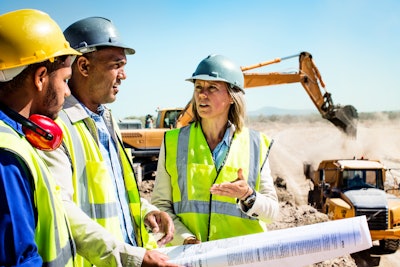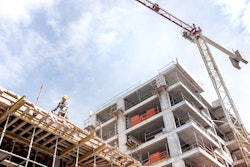
Dodge Construction Network Chief Economist Richard Branch says in the network’s Q3 report that there remains a cause for the construction industry to retain some optimism despite ongoing economic uncertainty and labor challenges.
"Overall, the industry remains very resilient, despite what seems like a tidal wave against the sector in terms of material prices, labor shortages and what appear to be higher interest rates and a slower economy,” Branch says in the report. “Near-term, one thing that is reasonably unique is that everyone is counting on infrastructure dollars to provide stability.”
He noted that from an economic and technological standpoint, the construction industry has an opportunity to make great strides because of the incoming government funding directed at promoting infrastructure and manufacturing.
Still, Branch advises caution, because much of the funding still needs to be appropriated by Congress annually, which can be a slow process and lead to some uncertainty.
Overall, he says, discussion of recession, supply issues and ongoing labor challenges does not seem to shake contractors' confidence.
According to the report, based on Branch’s analysis of the Dodge Momentum Index (DMI), which tracks the overall health of nonresidential building projects, owners and developers are looking beyond current economic concerns when it comes to moving forward with projects. The DMI has yet to show signs of stress amid any recession fears.
The report states that the DMI has shown overall increases across commercial and institutional components. Despite weak institutional planning activity in August, the DMI remained elevated in August, just a notch below July’s 14-year high. This indicates continued confidence from owners and developers that nonresidential building projects will be realized in the coming year.
Branch says month-to-month volatility is likely to remain for some time across the industry as challenges connected to pricing, politics and climate persists.
“Developers and owners remain confident that nonresidential building projects will weather the storm of higher interest rates and a slowing economy,” Branch says. “Whether this can be sustained remains a key question that will ultimately dictate the pattern for construction.”
Amid the ongoing labor challenges, high interest rates and uncertainty of recession, it appears the industry continues to improve.
“The Federal Reserve will continue to aggressively raise interest rates until they feel that inflation is under control,” he says. “This will create mounting pressure on building activity and potentially lead to a slowdown in construction starts by year-end.”
Cost of innovation
With the passage of the CHIPS Act and the Inflation Reduction Act, there has been an increase in government spending in the construction economy. In conjunction with those efforts comes the rising importance of sustainability and a greater effort to address the ongoing skilled-labor shortage. In addition, the report indicates that federal funding could have an impact on the technology being developed and the building materials used.
Specifically, Branch cites the Inflation Reduction Act, which is designed to increase the volume of clean-energy jobs and revitalize American manufacturing.
“The IRA’s focus on tax credits for renewable electricity and carbon capture will provide immediate benefit both for utility-scale wind and solar as well as residential rooftop solar power,” Branch says. “Renovation/retrofitting could also stand to gain as older buildings are brought up to new environmental standards. The impacts of these credits should be felt in the very near term.”
Similarly, the report states that the CHIPS Act will start impacting manufacturing plants in 2023 and 2024.
“This money helps to address concerns around other building types connected to the U.S. infrastructure and chip fabrication plants,” Branch said. “Many U.S. companies have projects in the planning cycle as a result of the $30 billion in hard construction costs that are in the planning process.”
He notes that the CHIPS Act also includes funding to minority-serving universities and improved STEM education in rural communities from pre-K-12th grade, which is largely designed to grow the future workforce in the high-tech industries in hopes of addressing the labor shortage.
Due to labor constraints, technological advances will play a larger role in making jobs more efficient and productive. The report states that nearly 80% of civil engineers see the highest value from site technologies used on their projects that help increase productivity, up from 56% in 2021. Improved ability to gather data is the second-highest priority, with the third priority being more detailed project data, which leads to a better ability to manage the project schedule.
“Productivity in construction has been slow to make gains,” Branch says. “This is mainly because construction is just beginning to take advantage of innovative technological trends.”
He suggests that more investment should be made in technology both on-site and for back offices.
“The industry’s ability to seize these opportunities is connected to its decision-makers and their ability to access and leverage the insight and data required to drive efficiency and productivity throughout each section of the construction value chain,” Branch states. “As an injection of innovation and resources joins a changing set of values at the end of Q3, the future of construction remains bright heading into Q4.”










